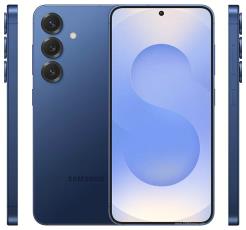Samsung Galaxy S25
 |
VS |
Asus Zenfone 10
 |
|
February 03, 2025
|
Released: |
July 10, 2023 |
|
Android 15, up to 7 major Android upgrades, One UI 7
|
Operating System: |
Android 13 |
|
Icy Blue, Mint, Navy, Silver Shadow, Pink Gold, Coral Red, Blue Black
|
Colors: |
Starry Blue, Midnight Black, Aurora Green, Eclipse Red, Comet White |
|
SM-S931B, SM-S931B/DS, SM-S931U, SM-S931U1, SM-S931W, SM-S931N, SM-S9310, SM-S931E, SM-S931E/DS
|
Models: |
AI2302 |
|
5G, 4G, 3G, 2G
|
Network Speed: |
5G, 4G, 3G, 2G |
| Display |
|
6.2 inches, 94.4 cm2 (91.1% screen-to-body ratio)
|
Size: |
5.92 inches, 84.6 cm2 (84.8% screen-to-body ratio) |
|
1080 x 2340 pixels, 19.5:9 ratio (416 ppi density)
|
Resolution: |
1080 x 2400 pixels, 20:9 ratio (445 ppi density) |
|
Dynamic LTPO AMOLED 2X, 120Hz, HDR10+, 2600 nits (peak)
|
Type: |
Super AMOLED, 144Hz, HDR10+, 800 nits (HBM), 1100 nits (peak) |
|
Corning Gorilla Glass Victus 2
|
Protection: |
Corning Gorilla Glass Victus |
| Body |
|
146.9
mm (5.78 in) |
Height: |
146.5 mm (5.77 in) |
|
70.5
mm (2.78 in) |
Width: |
68.1 mm (2.68 in) |
|
7.2
mm (0.28 in) |
Thickness: |
9.4 mm (0.37 in) |
|
IPx8
|
Water Resistant: |
IPx8 |
|
Glass front (Gorilla Glass Victus 2), glass back (Gorilla Glass Victus 2), aluminum frame
|
Material: |
Glass front, aluminum frame, plastic back |
|
Nano-SIM + Nano-SIM + eSIM + eSIM (max 2 at a time) - INT Nano-SIM + eSIM + eSIM (max 2 at a time) - USA Nano-SIM + Nano-SIM - CN
|
SIM: |
Dual SIM (Nano-SIM, dual stand-by) |
| Rear Camera |
|
3
|
Number of Cameras: |
2 |
|
50 MP, f/1.8, 24 mm (wide), 1/1.56″, 1.0µm, dual pixel PDAF, OIS
10 MP, f/2.4, 67 mm (telephoto), 1/3.94″, 1.0µm, PDAF, OIS, 3x optical zoom
12 MP, f/2.2, 13 mm, 120˚ (ultrawide), 1/2.55″ 1.4µm, Super Steady video
|
Camera Resolutions: |
50 MP, f/1.9, 24 mm (wide), 1/1.56″, 1.0µm, multi-directional PDAF, gimbal OIS
13 MP, f/2.2, 120° (ultrawide), 1/3.06″, 1.12µm |
|
8K@24/30fps, 4K@30/60fps, 1080p@30/60/120/240fps, 10-bit HDR, HDR10+, stereo sound rec., gyro-EIS
|
Video Resolution: |
8K@24fps, 4K@30/60fps, 1080p@30/60fps; gyro-EIS, HDR |
|
Best Face, LED flash, auto-HDR, panorama
|
Features: |
LED flash, HDR, panorama |
| Front (Selfie) Camera |
|
12 MP, f/2.2, 26 mm (wide), 1/3.2″, 1.12µm, dual pixel PDAF
|
Camera Resolutions: |
32 MP, f/2.5, (wide), 1/3.2″, 0.7µm |
|
4K@30/60fps, 1080p@30fps
|
Video Resolution: |
1080p@30fps |
|
HDR, HDR10+
|
Features: |
|
| Battery |
|
Li-Ion 4000 mAh
|
Battery Capacity: |
Li-Po 4300 mAh, non-removable |
|
25W wired, PD3.0, 50% in 30 min
15W wireless (Qi2 Ready)
4.5W reverse wireless
|
Charging: |
30W wired, PD3.0, PPS, QC4
15W wireless
5W reverse wired |
| Hardware |
|
Qualcomm SM8750-AB Snapdragon 8 Elite (3 nm)
|
Chipset: |
Qualcomm SM8550-AB Snapdragon 8 Gen 2 (4 nm) |
|
Octa-core (2x4.47 GHz Oryon V2 Phoenix L + 6x3.53 GHz Oryon V2 Phoenix M)
|
Processor: |
Octa-core (1x3.2 GHz Cortex-X3 & 2x2.8 GHz Cortex-A715 & 2x2.8 GHz Cortex-A710 & 3x2.0 GHz Cortex-A510) |
|
Adreno 830
|
GPU: |
Adreno 740 |
|
128GB 12GB RAM, 256GB 12GB RAM, 512GB 12GB RAM
|
Memory: |
128GB 8GB RAM, 256GB 8GB RAM, 256GB 16GB RAM, 512GB 16GB RAM |
|
No
|
Memory Card Slot: |
No |
|
Fingerprint (under display, ultrasonic), accelerometer, gyro, proximity, compass, barometer
|
Sensors: |
Fingerprint (side-mounted), accelerometer, gyro, proximity, compass |
|
No
|
Radio: |
No |
|
No
|
Audio Jack 3.5 mm: |
Yes |
|
Samsung DeX, Samsung Wireless DeX (desktop experience support)
Circle to Search
|
Other: |
|
| Network & Connectivity |
|
Wi-Fi 802.11 a/b/g/n/ac/6e/7, tri-band, Wi-Fi Direct
|
Wi-Fi: |
Wi-Fi 802.11 a/b/g/n/ac/6e/7, tri-band, Wi-Fi Direct |
|
5.4, A2DP, LE
|
Bluetooth: |
5.3, A2DP, LE, aptX HD, aptX Adaptive |
|
USB Type-C 3.2, DisplayPort 1.2, OTG
|
USB: |
USB Type-C 2.0, OTG |
|
GPS, GLONASS, BDS, GALILEO, QZSS
|
GPS: |
GPS (L1+L5), GLONASS (L1), BDS (B1I+B2a), GALILEO (E1+E5a), QZSS (L1+L5), NavIC (L5) |
|
Yes
|
NFC: |
Yes |
|
5G / LTE / EVDO / HSPA / CDMA / GSM
|
Technology: |
5G / LTE / HSPA / GSM |